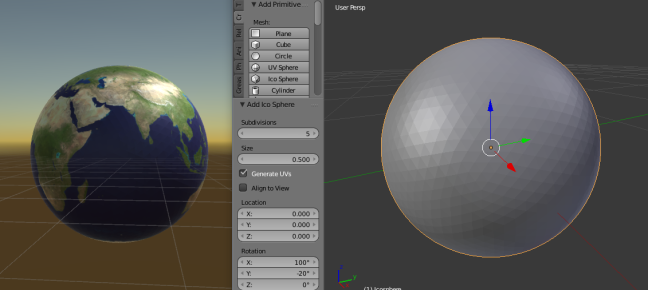The Warth texture was downloaded from NASA’s ‘Blue Marble’ picture gallery. I adjusted contrast and brightness but otherwise kept it as is. The default sphere mesh in Unity did not have enough triangles to make the Earth’s horizon smooth-looking. I created a new sphere mesh in Blender. I exported it to OBJ and imported it into Unity. To make the texture line up well I rotated until I saw that the equator intersected the right points in Africa, South America, and Indonesia.



You must be logged in to post a comment.